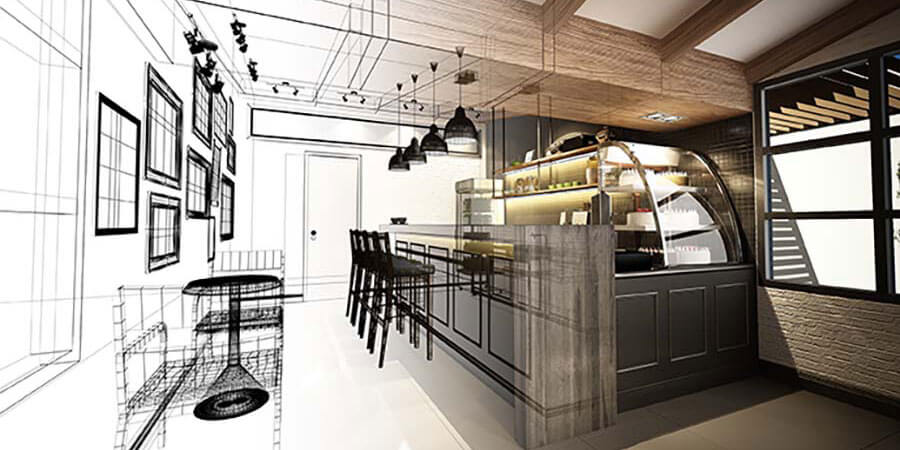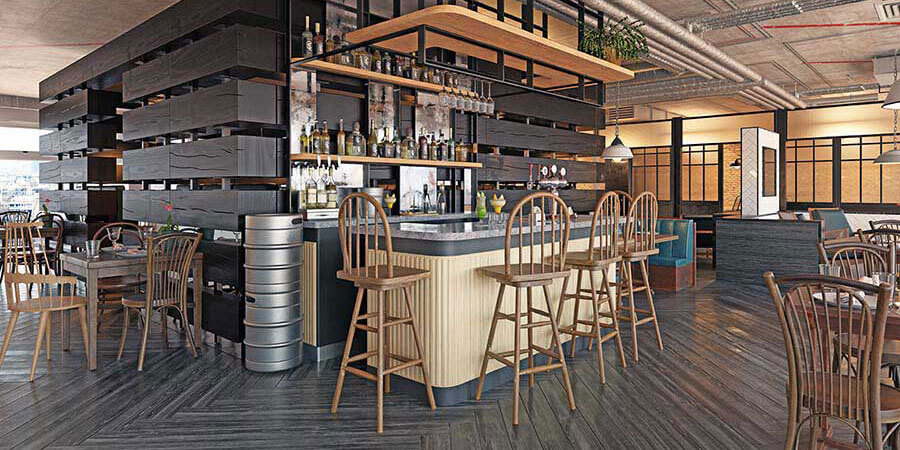6 Principles of Restaurant Design for Customer Satisfaction

Dining out is an experience.
According to the National Restaurant Association, “84% of consumers say going out to a restaurant with family and friends is a better use of their leisure time than cooking and cleaning up.” Plus, according to Axios, Americans spent more on eating out than on groceries in 2023 even though the cost of living has continued to rise.
That may be because, for many people, cooking isn’t a preferred activity. But there’s something else at play here too: the draw of a cultivated restaurant experience. Like going to the movies, going out to eat offers an escape from the daily grind — not to mention a chance to gather together with family or friends and even maybe re-live one’s own culture through cuisine.
As an aspiring or current restaurant owner looking to cultivate a cohesive brand experience and customer experience, what can you do to ensure that walk-ins become regulars, and regulars become raving fans?
Here’s what you need to know about restaurant design…
1. Why Restaurant Interior Design Matters
What do you feel when you walk into your favorite restaurant? It’s an important question to keep in mind when designing your restaurant for customers because you should aim to inspire certain feelings in them with your restaurant design (such as comfort, stimulation, or nostalgia).
As Deloitte notes in its survey of over 2,000 restaurant guests, restaurant patrons expect to be engaged, empowered, heard, delighted, and known. This is true across generations, tax brackets, regions of the country, and gender identities.
Cultivating an impactful restaurant experience starts before designing a restaurant begins. You should, for instance, create a brand identity and branding strategy first, ensuring that the final restaurant design is on-brand. Restaurant design ideas should always flow from how you want customers to feel, and that should be consistent with your brand strategy and unique value proposition.
You’ll also want to consider how your menu pairs with your restaurant design and how everything, working together as a cohesive whole, will be perceived by your intended target audience.
In sum, how a restaurant looks, feels, and is laid out impacts customer experience. This is true for front-of-house areas as well as back-of-house areas including the kitchen.
Restaurant layout design is as important as aesthetics and decor, too. After all, how a restaurant is organized and oriented can improve the flow of orders and promote operational efficiency.
If you’re planning to open a ghost kitchen or carryout-only establishment, don’t think you’re off the hook when it comes to restaurant design. While you may not have design branding to think about, you will still have to optimize your restaurant layout for your kitchen staff and restaurant concept.

2. How Restaurant Design Impacts Customer Experience
There are six key elements of restaurant design:
- 1. Architecture & Overarching Design: This includes the “bones” of your restaurant — the building, the interior space and how it is laid out, and the “design” writ large.
- 2. Lighting: Don’t underestimate the importance of restaurant lighting, which includes ambient lighting, task lighting, and accent lighting. These lighting sources should work together to create an atmosphere that is consistent with your desired branding, look, and feel.
- 3. Seating: A dine-in restaurant is nothing without proper seating. When designing seating areas, think about traffic flow, material, and seating type (i.e. high top vs. standard table vs. Lounge/bar seating). Your choice of seating also factors into your maximum passenger capacity.
- 4. Colors: Did you know that certain colors are known to stimulate the senses and encourage a healthy appetite? Others, by contrast, can repress hunger.
- 5. Scents: People eat not only with their eyes but also with their noses, metaphorically speaking, before taking their first bite. Therefore it may be wise to include highly fragrant menu items (think fajitas at a Mexican restaurant or Marinara sauce at an Italian restaurant).
- 6. Acoustics: A restaurant’s acoustics can significantly add to or detract from the overall dining experience. So use sound-insulating design elements, play mood music, or anything else that will contribute to the “right” atmosphere, which will be different for every establishment.
When used appropriately in unison, all of these elements should work together to engage and delight customers while bolstering branding and delivering a winning experience that will turn first-time patrons into repeat customers.
Menu design, or the practice of crafting a perfect menu, includes everything from determining menu items to creating a pricing structure, format, and layout. Not to be confused with restaurant design, menu design is nevertheless an important addition to creating a winning customer experience.
3. Restaurant Kitchen Design & Operational Efficiency
For dine-in establishments, wait time is an important factor.
Customers who wait too long for their main course will leave frustrated. Customers served too quickly may skip ordering a round of drinks or appetizers.
Believe it or not, your kitchen design plays a key role in wait times, and thus, on your restaurant’s customer experience. It’s vitally important to design your back-of-house areas to promote efficient, safe, and sanitary delivery of food.
Design Your Way to Success
When designing your restaurant kitchen, it’s important to think critically about choosing restaurant equipment. You want equipment to be well-suited to your menu and staff.
GoFoodservice has the commercial kitchen equipment you need to execute your restaurant concept successfully, so you can be successful by design!
Share This!